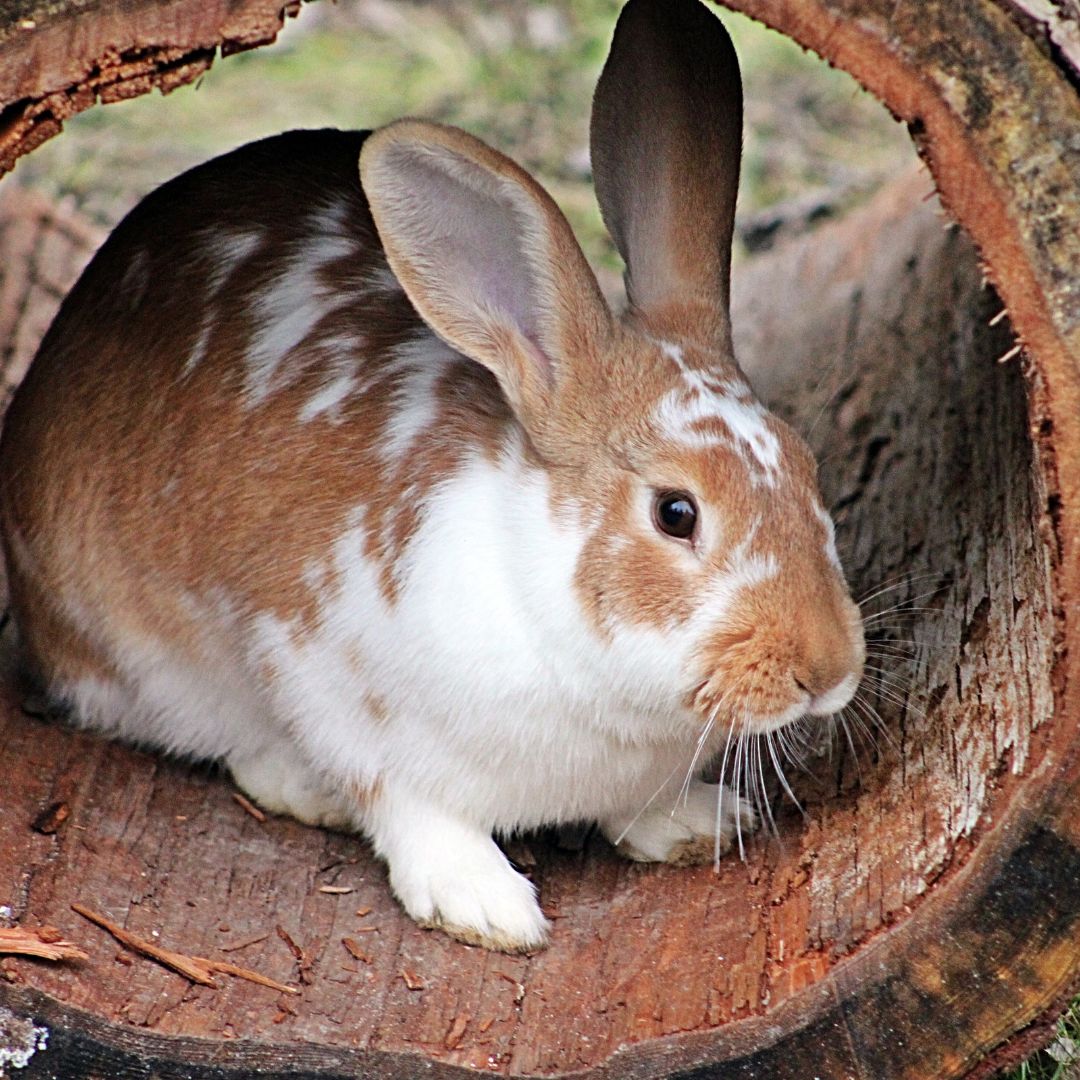Tips for a Smooth Transition: Introducing a Cat and a Rabbit
It can be difficult to introduce a cat and a rabbit, but with the appropriate planning and persistence, it can be done. Here are some pointers to make the shift go smoothly:
1. Introduce the animals first in different spaces. Put a blanket or toy that has come into contact with the other animal in the room so they can become used to each other's scent.
2. Start introducing the animals in a neutral space, like a hallway or bathroom, once they are at ease in their individual quarters. Ensure that a barrier, such as a baby gate, is used to keep the animals apart.
3. Permit communication between the animals via the barrier. If they appear at ease, you can move the barrier closer until they can communicate without it.
4. Keep an eye on all animal encounters. Separate the animals right away if either becomes agitated or hostile.
5. Give the animals a lot of toys and snacks to keep them entertained.
6. You might think about seeking guidance from a qualified animal behaviourist if the animals are still having trouble getting along.
You can help ensure a seamless transition when introducing a rabbit and a cat by paying attention to these suggestions. Both creatures can learn to live in harmony together with time and effort.
The Benefits and Drawbacks of Keeping a Cat and a Rabbit Together
Both cats and rabbits can benefit from living together, but it's necessary to weigh the advantages and disadvantages of the scenario before deciding to keep them together.
The Benefits
The main advantage of keeping a cat and a rabbit together is that they can provide one another with company. While cats are frequently glad to have a playmate, rabbits are social creatures and can get lonely if kept alone. In addition, because they are natural predators, cats can help keep a rabbit secure from other animals and provide it a sense of security.
The ability for them to keep each other engaged is the second advantage of keeping a cat and a rabbit together. Cats can enjoy chasing and playing with the rabbit, while rabbits can benefit from having a partner to explore with.
The Drawbacks
The main drawback of housing a cat and a rabbit together is the possibility that they won't get along. Rabbits can be timid and may not like the presence of a cat, whereas cats are hunters and may consider the rabbit as prey. Cats might also be inclined to run after or jump on the rabbit, which could be harmful to it.
The fact that a cat and a rabbit might not have the same nutritional requirements is the second drawback of keeping them together. While rabbits need a diet heavy in fibre, cats need one that is high in protein. Health issues for both animals may result from feeding them together.
In conclusion, having a rabbit and a cat together can be gratifying, but it's crucial to weigh the benefits and drawbacks before deciding to do so. It can be a wonderful method to give both animals friendship and entertainment if they get along and can be fed separately.
What to Watch Out For When Reading Rabbit and Cat Body Language
You can better comprehend cats' and bunnies' behaviour and have a closer relationship with them if you are aware of their body language. To make sure they feel secure and at ease, it's crucial to be mindful of the tiny cues they give off.
Cats
Cats express themselves by scent, vocalisations, and body language. Cats frequently adopt a calm stance with their ears pointed forward and their tail held low when they are feeling at ease and content. They might also massage their paws or purr. A cat may hunch down, flatten its ears, and tuck its tail between its legs if it feels threatened or terrified. They might also growl or hiss.
Rabbits
Rabbits can also express themselves by scent, vocalisations, and body language. A rabbit will frequently adopt a calm stance with their ears up and their tail raised high when they are feeling at ease and content. Additionally, they could lick their lips or thud their rear legs. A rabbit may hunch down, flatten its ears, and tuck its tail between its legs if it feels threatened or terrified. Additionally, they could thud their hind legs or clench their teeth.
In conclusion, learning how cats and rabbits communicate through body language will help you better understand their behaviour and develop a closer relationship with them. You can tell if they're feeling safe and at ease by observing the small cues they give off.
How to Make a Rabbit and Cat's Environment Safe and Exciting
It might be difficult to provide a safe and enjoyable home for both a cat and a rabbit. But it is feasible to design an environment that is both secure and stimulating for both animals with the correct planning and information.
First, it's crucial to check that the area is big enough for both animals to wander around without feeling constrained. Both animals may experience tension and anxiety if the area is too tiny. Furthermore, it's critical to give both animals lots of places to hide. They will be able to feel comfortable and secure in their surroundings as a result.
Second, it's critical to offer both animals a variety of toys and entertainment options to keep them occupied. This can include hay cubes, chew toys, and tunnels for the rabbit. Scratching posts, catnip toys, and interactive toys are examples of appropriate items for cats.
Third, it's crucial to provide both animals with lots of room to roam. Both a defined space for the cat to explore and a specific area for the rabbit to explore might be included in this. This will keep both animals interested and stimulated.
Finally, it's critical to show both animals a lot of love and care. This might entail giving them frequent touching and snuggling, as well as snacks and toys. The relationship between the pets and their owners will get stronger as a result of this.
These procedures can be used to make a space that is secure and stimulating for both a cat and a rabbit. It is possible to design an environment that is secure and engaging for both animals with the correct planning and information.

What to Expect and the Benefits of Bonding a Rabbit and Cat
Both the animals and their owners can benefit from creating a bond between a cat and a rabbit. Understanding the bonding process and the expectations that go along with it is crucial. A rabbit and a cat can become lifelong friends with the appropriate technique.
The first step in creating a friendship between a cat and a rabbit is to introduce them to one another in a secure setting. It's critical to make sure neither the cat nor the rabbit exhibit aggressive behaviour towards the other. It's crucial to make sure the cat is not let to chase the rabbit. It's crucial to give both animals plenty of rewards and encouragement throughout the introduction.
Allowing the animals to socialise in a controlled environment is crucial after they are familiar with one another. They will get to know one another better and develop trust as a result of this. It's critical to prevent either the cat or the rabbit from acting out aggressively or fearfully.
It's crucial to give the animals plenty of chances to play together once they've grown accustomed to one another. They will become closer and have a solid relationship as a result. It's critical to prevent either the cat or the rabbit from acting out aggressively or fearfully.
It's crucial to keep in mind that creating a friendship between a rabbit and a cat requires time and patience. With both creatures, it's critical to exercise patience, understanding, and a lot of good reinforcement. A rabbit and a cat can become lifelong friends with the appropriate technique.
